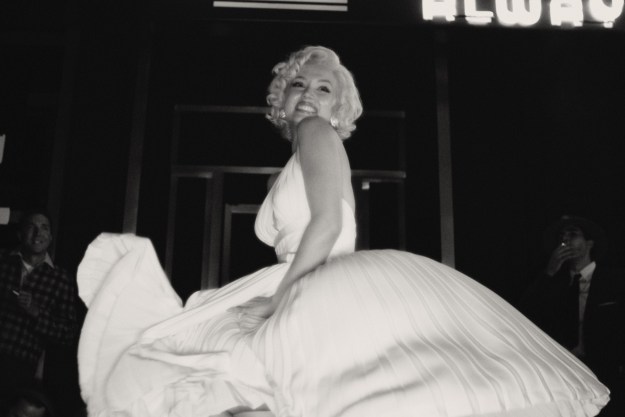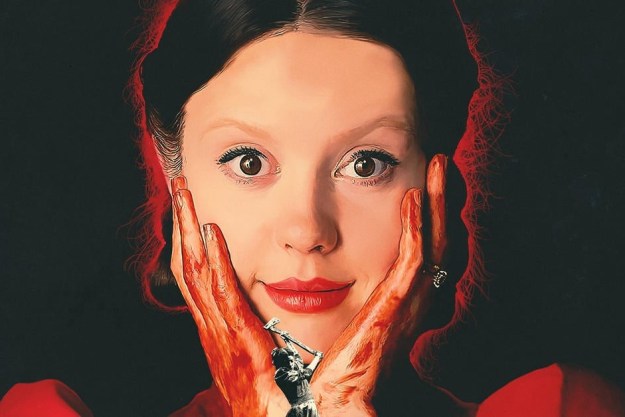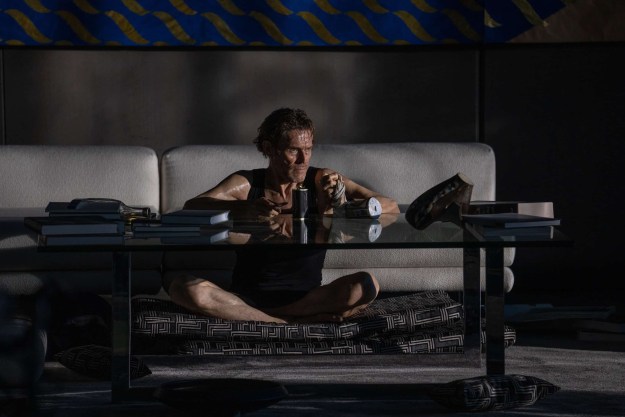
“Inside is an ambitious but ultimately ineffective psychological drama.”
- Willem Dafoe's go-for-broke solo performance
- An effectively disorienting pace
- A meandering, overlong story
- A disappointing lack of tension throughout
- A lackluster conclusion
Inside is a thoroughly unpleasant film. That isn’t a bug so much as it is a feature, though. The film, which comes from director Vasilis Katsoupis and writer Ben Hopkins, is a self-contained descent into the mind of one man who finds himself trapped in the most absurdly suffocating, bourgeoisie of settings. Despite what its trailers might have you believe, Inside isn’t much of a thriller, either. The film is, instead, a test of not only its character’s patience, but also the audience’s. For nearly two hours, Katsoupis and Hopkins ask you to sit by and watch as one trapped art thief is forced to lower himself to his most animalistic standards in order to survive.
Inside is, in other words, a cinematic endurance test. Its displays of filth and madness grow over the course of its story until they reach such absurd lows that they’ll have you questioning what the point of any of it was in the first place. Unfortunately, Inside fails to offer a satisfying answer to that question. In fact, outside of the commendable, go-for-broke performance at the center of it, there’s not much about Inside that’s worth recommending. The film is ultimately just as shallow as the ankle-high pond that sits at the center of the New York City penthouse apartment where Inside’s story unfolds.
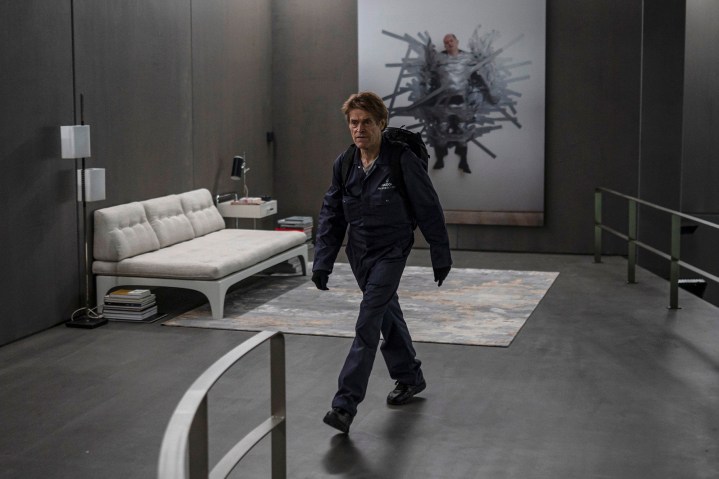
The film, to either its credit or its fault, tries to keep the surface-level depth of its story hidden for as long as possible. The drama’s opening minutes set it up to be the kind of bare-bones, but efficient heist-gone-wrong thriller that it most definitely is not. Over the course of its prologue, viewers watch as the film’s central art thief, Nemo (Willem Dafoe), infiltrates a high-security NYC penthouse owned by a renowned artist and begins looting some of the paintings and sculptures that are scattered throughout the apartment.
Everything goes wrong when a system malfunction triggers the apartment’s highest security measures, which not only seal Dafoe’s Nemo inside behind impenetrable steel doors and bulletproof glass windows, but also shut off the penthouse’s electricity and plumbing. Abandoned by his fellow heist members, Nemo quickly begins to realize that his out-of-town mark’s apartment has now become the prison he may very well die in. From that point on, Nemo’s desperation to survive only continues to grow until he’s willing to not only eat dog food, but also scale dangerously high stacks of rearranged furniture on the slim chance that they might lead him to freedom.
The places Inside eventually goes aren’t nearly as interesting as its first act suggests. That fact doesn’t take away from how genuinely effective the first 20 minutes or so of Inside are. After throwing the film’s initial heist premise out the window, Katsoupis and Hopkins spend Inside‘s opening minutes stacking problem upon problem on Dafoe’s Nemo until the sense of dread created by his seemingly inescapable situation has become overwhelming. The early moments where Nemo successfully disables his new prison’s blaring alarms and figures out how to take full advantage of its miniature garden’s sprinkler system also set Inside up to be a Man Escaped-esque, Robert Bresson-inspired minimalist thriller.
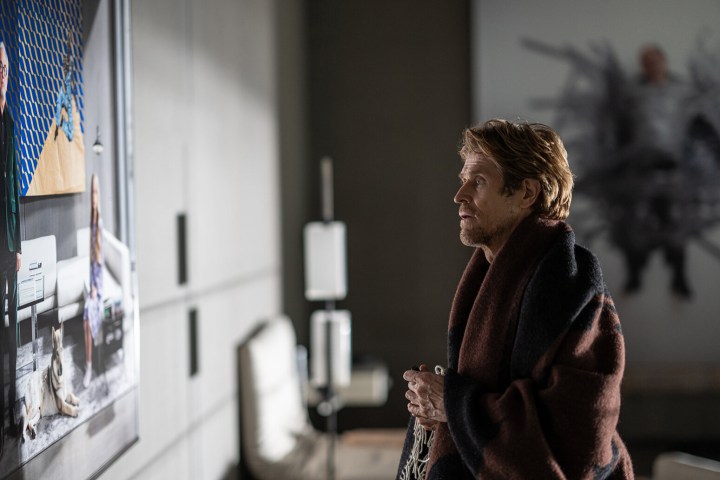
It’s not much of a spoiler to reveal that Inside ultimately doesn’t end up going that route. Instead, the film spends most of its second and third acts pursuing surreal detours and lingering on moments of quiet, increasingly dull madness. At first, the latter scenes, including one where Dafoe’s Nemo decides to tell a joke to an entire imaginary crowd of listeners, hit with a considerable level of startling sharpness. By the time Nemo’s puppeteering chairs and singing the same songs over and over again to himself, though, the film has lost so much tension that even Dafoe’s biggest moments of crazed desperation end up feeling more superfluous than shocking or unnerving.
Rather than maintaining a constant strain of tension, Inside becomes so wrapped up in wallowing in the misery of its protagonist’s situation that any sense of urgency or suspense has utterly disintegrated by the time the film has reached its halfway point. While Inside tosses in more than a few moments of surreal fantasy throughout its runtime as well, very few of them actually land with any real weight. Behind the camera, Katsoupis’ visual style feels so suffocatingly controlled that it prevents Inside from ever truly reaching the kind of surreal, dreamlike heights that it so desperately aims for.
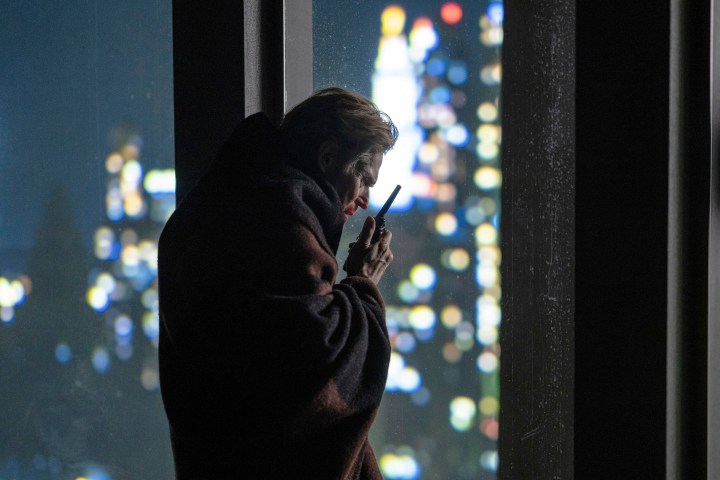
Of the film’s surreal sequences, the only one that leaves much of a lasting impression sees Dafoe’s Nemo briefly fantasize about a maid (Eliza Stuyck) he’s watched through a set of security cameras make her way into his penthouse prison and share a moment of restrained intimacy with him. Katsoupis’ camera cuts extremely close to Dafoe’s lips and cheeks throughout the scene, and Steve Annis’ cinematography lovingly captures the moments when Stuyck’s maid traces her lips and fingers along Nemo’s face without ever actually touching him.
The scene is one of the only moments where Inside feels locked into its protagonist’s emotions and loneliness. For the rest of its runtime, Inside feels far too preoccupied with maintaining a cold, omniscient perspective. While it briefly feints toward interesting ideas about the way in which wealth and art have become toxically linked in the 21st century as well, Inside never pursues any of its various ideas deeply enough for them to feel fully baked or thought-provoking. The fact that the film’s story concludes with a series of suggestive images rather than a dose of concrete catharsis (or even dark humor) only makes it that much more clear just how badly Katsoupis has gauged what moviegoers may actually want from Inside’s story.
It’s the tragic irony at the heart of Inside that, much like its protagonist, the film never really ends up going anywhere.
Inside is now playing in theaters.
Editors' Recommendations
- Rosaline review: Kaitlyn Dever lifts up Hulu’s Romeo and Juliet rom-com riff
- Conversations with A Killer: The Jeffrey Dahmer Tapes review: killer’s words yield little insight
- Tár review: Cate Blanchett soars in Todd Field’s ambitious new drama
- Entergalactic review: a simple but charming animated romance
- God’s Creatures review: an overly restrained Irish drama


